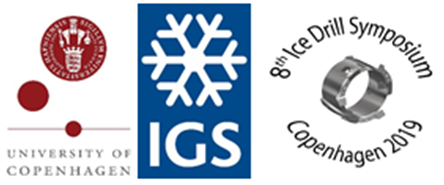Speaker
Description
Ice core handling comes with many challenges, especially in the brittle ice zone. Here we present a technique to process longitudinally broken ice pieces (slant breaks) for continuous flow analysis (CFA). This technique involves shaving ice either side of the break (slant or normal) and refitting the pieces before melting them, instead of cutting out the slanted break and creating a discontinuity. Preserving the break allows for more of the ice to be analysed using CFA techniques. We use the Roosevelt Island Climate Evolution (RICE) ice core stable isotope CFA dataset as proof of concept, demonstrating our technique by comparing duplicate core segments that were melted with and without slanted cuts. Although the cleaning process did remove some material and slightly smooth some of the data, there was no loss of major features. We were able to include ~3m of ice, or about ~1% of the 261m brittle ice, that would have been unable to be incorporated into the CFA analysis. This equates to ~1300 years record scale as it was in the deeper, more compressed part of the core.
This technique was developed at the GNS Ice Core Facility, located in Lower Hutt, New Zealand which was opened in 2007. The facility includes: two storage freezers operating at -36°C which are utilised to store approximately 2000 metres of core material, a working cold laboratory set at -20°C, and a class 1000 clean laboratory (room temperature). The site also has additional frozen container storage: two 20 ft reefers and one 40 ft reefer that is CO2 cooled and able to perform at -40°C. The clean lab is equipped with an ice melt set-up: upright freezer for melting core and clean hoods for discrete sample collection. For CFA analysis we have a laser spectroscopy system and for discrete water chemistry (major ion component) analysis we have an ion chromatograph which can measure ions to the low ppb level. The campus also includes a stable isotope laboratory that can be utilised for ice core analysis.

